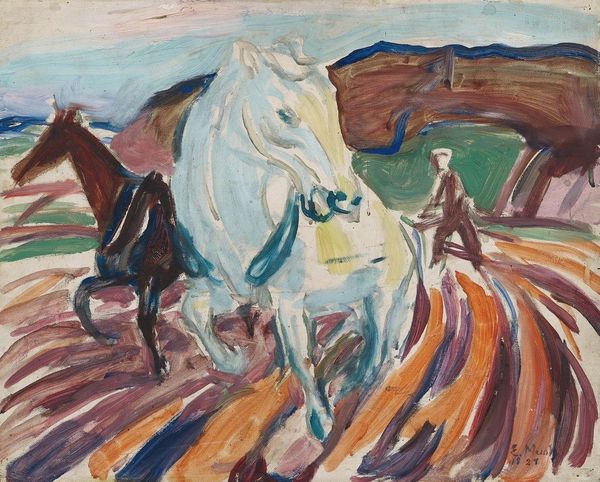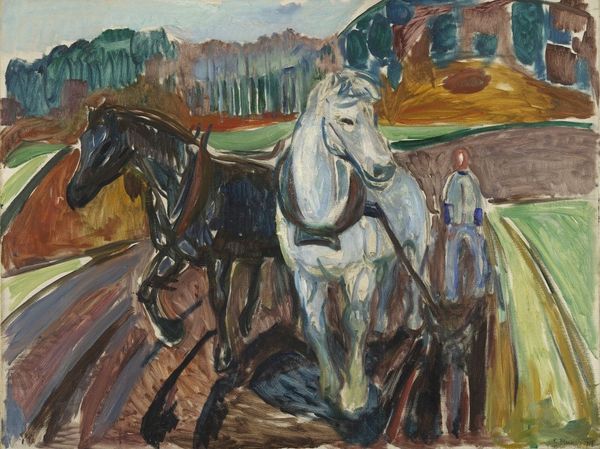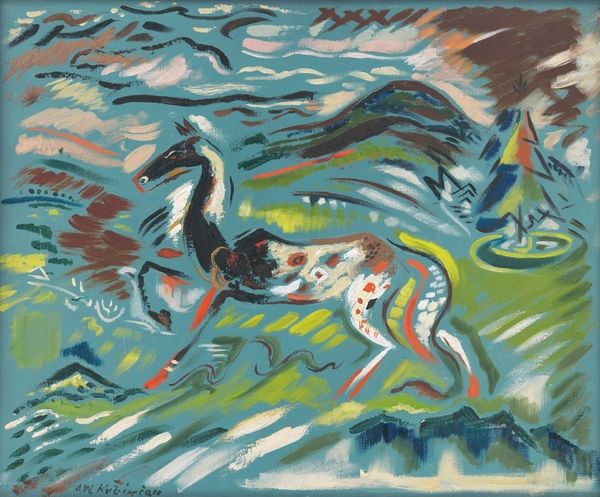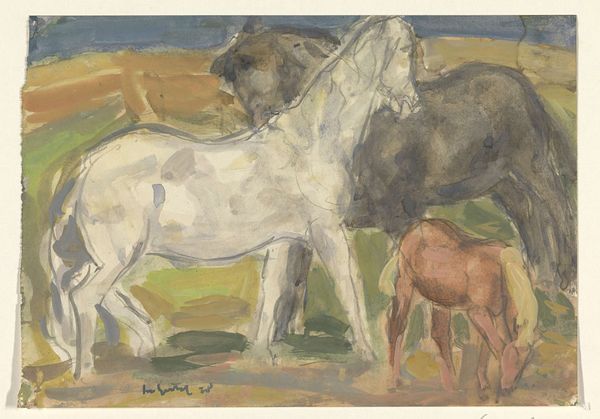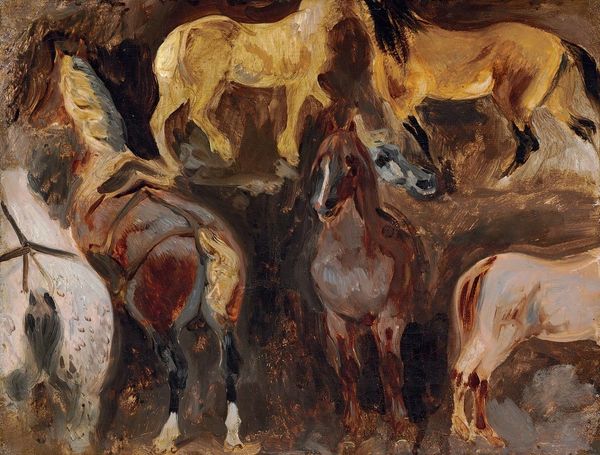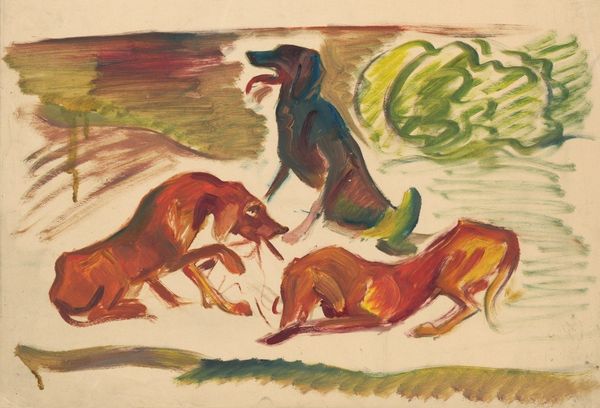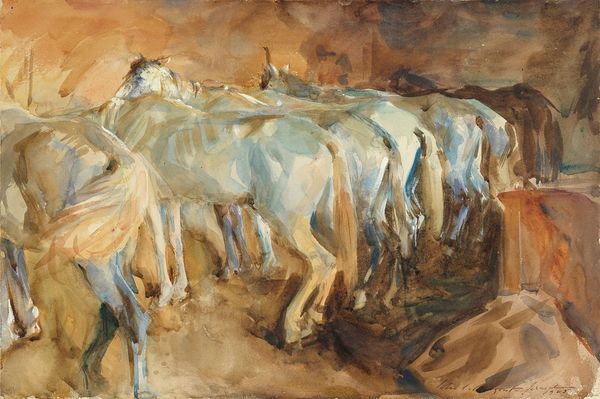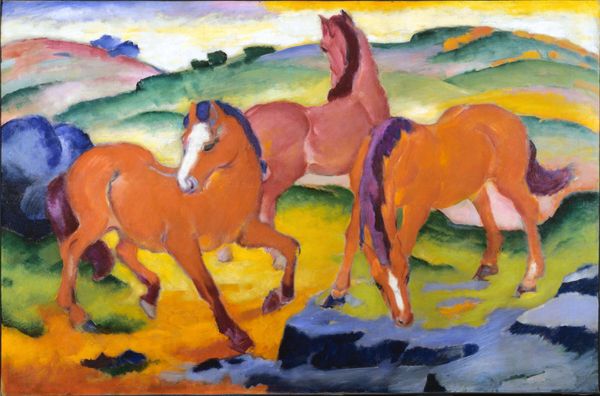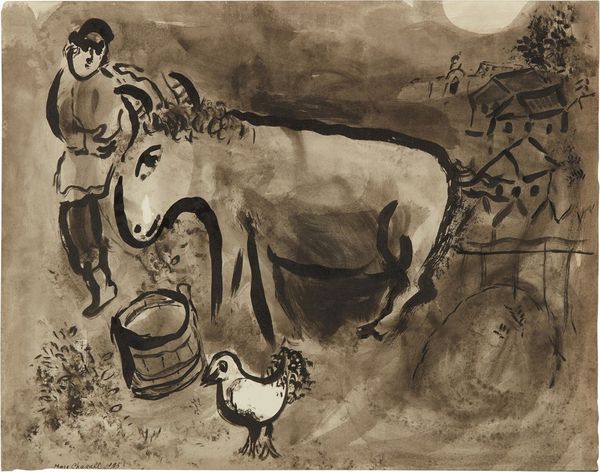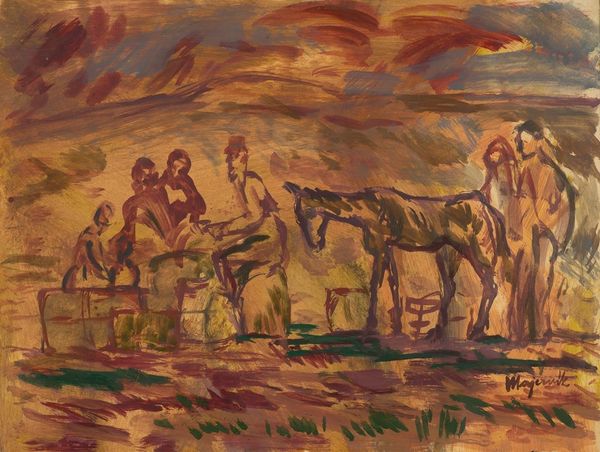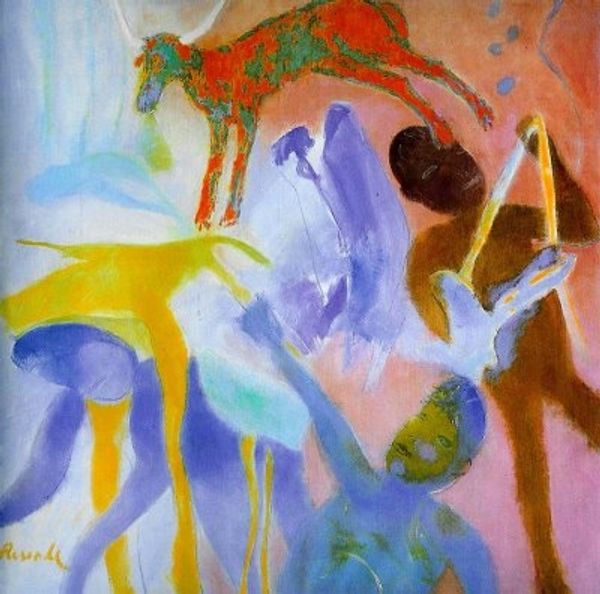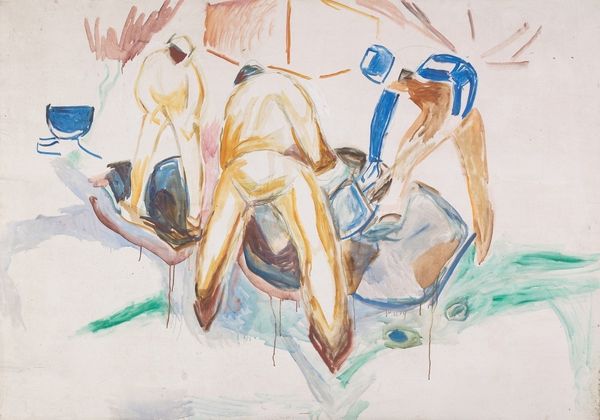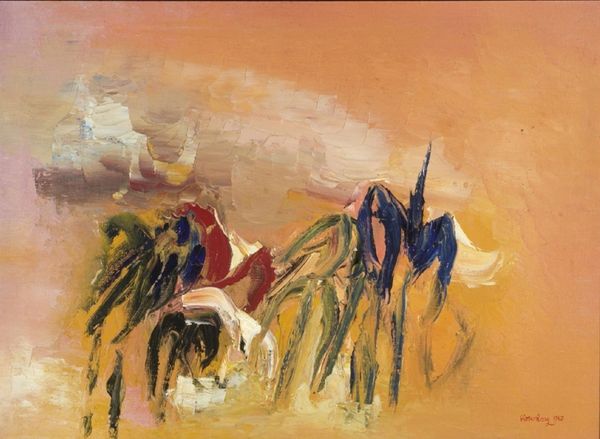
Copyright: Public Domain: Artvee
Editor: Edvard Munch's "Horse Team and a St. Bernard in the Snow," painted in 1923, is rendered with striking colors in oil on canvas. The heavy impasto creates a tangible sense of cold and movement. I’m really captivated by the intense palette here, almost fauvist in its application. How would you interpret this departure, while keeping in mind Munch's better-known themes? Curator: Well, first notice the posture and expression of each animal. What might these horses and the St. Bernard dog represent collectively? Munch consistently uses animals as conduits for emotional landscapes; in this work, they may indicate a connection to primal survival, warmth, and domesticity set against an arctic chill. These themes reflect ancient symbiotic partnerships that underpin both human and animal survival in harsh environments, evoking protection and the necessity of kinship in nature. The striking use of color amplifies their intensity of feeling in the face of isolation. Editor: So, you’re saying the bold colors aren't just decorative; they deepen our sense of these figures' vulnerability in a cold, unforgiving landscape? Curator: Precisely. And consider the St. Bernard. Typically, they symbolize rescue. In this context, perhaps the dog's presence is a subtle suggestion of hope or resilience, deeply contrasting Munch's broader preoccupation with isolation and angst. Can we even consider these brushstrokes as a representation of movement, or possibly even change? Editor: That’s a fantastic point. I’d only thought about the individual colors at first, and their departure from the more subdued palette usually linked to Munch. Looking at them symbolically expands the way I engage with this painting so much. Curator: Symbols embedded in plain sight carry multiple meanings across centuries and contexts, reflecting shared cultural memories and deeply felt emotions. We just need to keep searching for them!
Comments
No comments
Be the first to comment and join the conversation on the ultimate creative platform.
